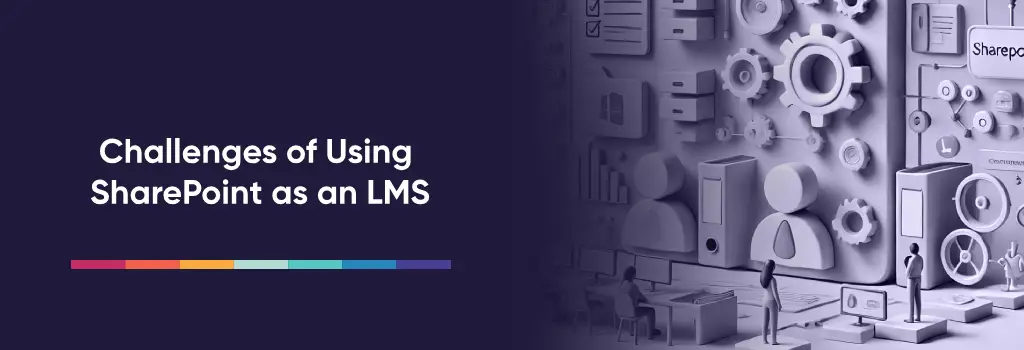Many organizations begin their digital learning journey using tools already available within the Microsoft ecosystem, most notably SharePoint. It offers convenience, familiar interfaces, and strong document management features. However, Microsoft does not provide a clear, dedicated LMS option, which often leads teams to piece together solutions with SharePoint, Power Automate, and Teams. While these tools can deliver basic training workflows, they introduce limitations when learning programs scale or require structured paths. As training requirements grow and content libraries expand, organizations often find themselves needing a platform designed specifically for learning. That is where Moodle steps in.
I am Director of Rahab Ministry (a program of Youth Unlimited). We are impressed with Mindfield’s IT specialists in helping us redesign a website (Rahab.yugta.ca) and their ongoing support. They were responsive and helped us think ahead instead of waiting for us to tell them what needed to be done. We will continue to look forward to their support.
Joanna Yee
Director, Rahab Ministry.
review Source: Google Reviews
Outline
Challenges of Using SharePoint as an LMS

Although SharePoint performs well for document sharing and team collaboration, it was not designed for learning management. Organizations operating training programs through SharePoint encounter several key issues:
-
Lack of course structure: SharePoint does not support native course hierarchies, enrollment management, grading, or certificate issuance.
-
Complex workarounds: Organizations often need to create Power Automate flows, custom lists, or embed third party tools to simulate LMS features.
-
Opaque troubleshooting: Because Power Automate is a low code environment, diagnosing and resolving issues can be difficult. When automation fails, there is limited visibility into code level errors or workflow logic.
-
Performance issues at scale: As training records and course catalogs grow, SharePoint environments often slow down, showing long load times, slow workflows, or even frozen screens.
-
Limited learner engagement: SharePoint lacks discussion forums, interactive activities, and real time tracking of learner progress.
-
Inconsistent user experience: Learners often face disjointed navigation and fragmented content access.
These limitations lead to support burdens and hinder the scalability of training programs.
How Moodle Bridges the Gaps

Moodle is a learning platform created to support training, compliance, and education delivery. It directly addresses the gaps found in SharePoint based setups:
-
Comprehensive course tools: Administrators can create structured courses with activities, quizzes, assignments, and certificates.
-
Built in learning progression: Moodle supports completion conditions, course prerequisites, and personalized learning paths.
-
Advanced reporting: Managers and instructors can access detailed logs, activity reports, and learner performance data.
-
Support for organizational structure: Using platforms such as IOMAD, Moodle can deliver training across departments, branches, or client organizations, each with its own access and branding.
-
Control of performance: Unlike SharePoint, Moodle supports both horizontal and vertical scaling. Organizations can adjust infrastructure to match growth and optimize performance and cost.
Organizations gain flexibility, automation, and learner focused features without the need for complex customization.
Migration Paths: From SharePoint to Moodle

Because SharePoint implementations vary widely, migration approaches must be tailored. Here are three common migration pathways we implement:
1. Third-Party Tools
Some applications allow export of SharePoint content and import into Moodle. These are typically limited to static content, such as documents and videos, and do not support interactive elements or learner tracking.
2. Custom Migration Development
When SharePoint contains large volumes of structured data or tightly integrated workflows, our team builds custom scripts and connectors. These tools extract relevant data, restructure it for Moodle, and maintain user progress or course relationships where applicable.
3. New LMS Design and Installation
For organizations with minimal structure in SharePoint or inconsistent training records, a fresh Moodle deployment is often the most efficient path forward. We work with stakeholders to reimagine the training experience, apply standardized templates, and ensure clean, scalable architecture.
Each strategy is based on your content structure, business goals, and desired learner experience.
From Complexity to Clarity: Partnering With Moodle Pros

Transitioning from SharePoint to Moodle is not just a technical task; it is a strategic initiative that impacts the way your organization delivers, tracks, and scales learning. Hiring experienced developers ensures the migration is carried out with precision, clarity, and long term stability. At Mindfield, our team brings deep experience in both SharePoint and Moodle, enabling us to accurately assess your current setup and translate it into a fully functional, learner friendly Moodle environment.
Expert developers offer more than just technical know-how. They bring strategic planning to align your training goals with Moodle’s architecture, develop custom features when existing tools fall short, and optimize system performance to ensure reliability and responsiveness. A well executed migration minimizes risks such as data loss or user confusion, and allows for a seamless transition that learners and administrators can trust. Beyond the launch, experienced developers provide ongoing support, training, and enhancements that keep your LMS agile and effective. By working with a team that understands both platforms, you not only ensure a smooth migration—you create a sustainable, future ready learning environment.

